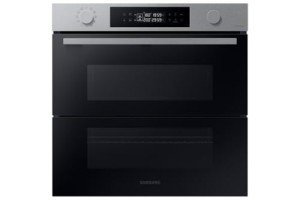Built-In Ovens in the UK: A Comprehensive Guide
Built-in ovens have ended up being an essential feature in modern cooking areas across the UK, providing both performance and design. They are designed to fit seamlessly into kitchen cabinetry, using a smooth and integrated look that matches modern kitchen styles. This post explores the benefits of built-in ovens, the different types offered, crucial functions to consider, and regularly asked questions that will help customers make informed decisions.
Benefits of Built-In Ovens
Selecting a built-in oven comes with numerous benefits, which include:
- Space-Saving Design: Built-in ovens are designed to fit within kitchen cabinetry, making them ideal for smaller sized areas where free-standing systems might take up excessive space.
- Aesthetic Appeal: These ovens use a tidy, modern-day appearance that boosts the total appearance of the kitchen. They can be positioned at eye level, making them accessible while reducing flexing or crouching.
- Integrated Technology: Many built-in ovens come equipped with sophisticated cooking technologies, including convection cooking and self-cleaning features, making cooking more efficient and problem-free.
- Increased Resale Value: A modern, trendy kitchen with built-in appliances can substantially increase a home's resale worth, making it more appealing to possible purchasers.
- Variety of Options: Built-in ovens been available in various sizes and designs, permitting house owners to pick one that fits their particular kitchen layout and cooking requirements.
Types of Built-In Ovens
Built-in ovens are offered in numerous setups, each catering to various cooking designs and preferences. Here are the main types:
| Type of Built-In Oven | Description |
|---|---|
| Single Ovens | These ovens include one compartment, generally ideal for basic baking and roasting requirements. |
| Double Ovens | Featuring two compartments, double ovens permit simultaneous cooking at different temperatures, making them best for large households or those who frequently entertain guests. |
| Mix Ovens | Integrating a conventional oven with a microwave, these flexible systems conserve area and time, enabling quick heating and cooking. |
| Steam Ovens | Making use of steam cooking technology, steam ovens are perfect for healthy cooking, maintaining moisture and nutrients in food while providing a distinct cooking technique. |
| Wall Ovens | Installed greater up in the kitchen, wall ovens can be single or double. They enable easy access while releasing up area on the counter. |
Secret Features to Consider
When selecting a built-in oven, it's vital to examine certain functions. Customers must consider:
- Size and Capacity: Determine the space offered in your kitchen and pick an oven that fits comfortably without frustrating the style.
- Energy Efficiency: Look for ovens with higher energy rankings, as they can conserve cash in time and are more ecologically friendly.
- Cooking Functions: Different ovens included numerous cooking modes-- such as baking, grilling, and rotisserie. Evaluate which operates accommodate your cooking style.
- Control Options: Newer models often feature touch controls, digital interfaces, and smart technology that permits remote operation by means of mobile phone apps.
- Self-Cleaning Features: Many built-in ovens featured self-cleaning choices, significantly streamlining oven maintenance.
- End up and Design: Choose surfaces-- like stainless-steel, black, or white-- that complement the general kitchen visual.
Popular Brands in the UK
Numerous brand names control the built-in oven market, each offering various functions and cost points. Some of the most popular options consist of:
- Bosch
- Siemens
- Neff
- Samsung
- Hotpoint
- AEG
- Miele
These brand names are understood for their reliability, innovation, and customer service, making them a relied on option for customers.
Frequently Asked Questions (FAQs)
1. Are built-in ovens more pricey than freestanding designs?
Built-in ovens tend to be more costly than freestanding models due to their custom sizing, styling, and advanced features. Nevertheless, they supply greater value in regards to looks and performance.
2. Can I install a built-in oven myself?
While some helpful homeowners might try a DIY installation, it is typically advised to hire an expert to ensure proper installation, especially concerning electrical and pipes connections.
3. How do I tidy my built-in oven?
Numerous built-in ovens included self-cleaning choices, which substantially minimize the effort required. For models without this function, routine cleaning with non-abrasive cleaners and a soft cloth is essential for upkeep.
4. What is electric oven gas hob built in -span of a built-in oven?
Typically, built-in ovens can last between 10 to 15 years, depending upon usage and maintenance. Regular servicing can help extend the device's life expectancy.
5. Can I change a built-in oven with a different brand name?
Yes, built-in ovens can usually be replaced with any suitable model, but it is vital to guarantee that the new oven matches the existing cut-out space in the kitchen cabinetry.
Built-in ovens provide an advanced blend of energy and style, making them an integral part of modern cooking areas in the UK. With various types, unique features, and a range of choices available from popular brands, house owners have adequate choices to pick an oven that fulfills their cooking requirements and kitchen visual appeals. By understanding the benefits, types, and necessary features, customers can make educated decisions that improve their cooking experiences. Whether for daily meals or unique celebrations, a built-in oven is a financial investment that guarantees convenience and quality for years to come.

